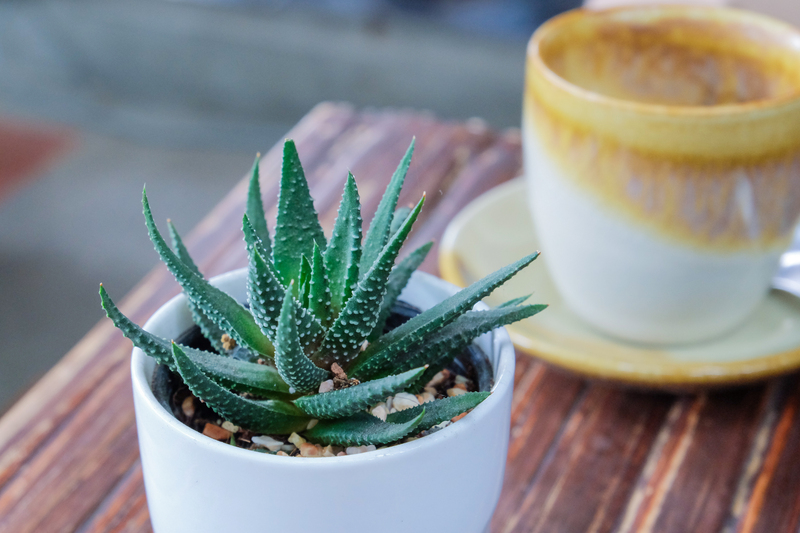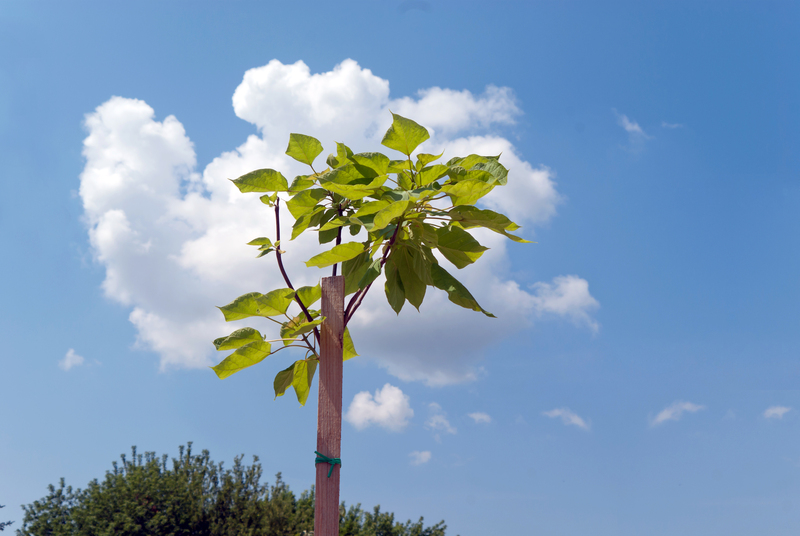Discover essential tips for flourishing orchids
Posted on 28/05/2025
Discover Essential Tips for Flourishing Orchids
Orchids are renowned for their exotic beauty, vibrant colors, and captivating forms. Whether you are a novice or a seasoned plant enthusiast, learning how to nurture these tropical wonders is a rewarding experience. If you wish to unveil the secrets to flourishing orchids, this comprehensive guide will empower you to cultivate healthy, blooming plants year-round.
Why Orchids Are a Unique Addition to Any Home
Orchids are more than just decorative houseplants. With over 25,000 species, they offer a stunning array of floral shapes, colors, and scents that can elevate any indoor or outdoor space. These delightful plants also symbolize love, beauty, and strength, making them a favorite among flower lovers. However, achieving lasting orchid blooms requires understanding their specific needs.

Key Insights into Orchid Growth and Health
Before delving into the essential orchid care tips, let's uncover some fascinating facts:
- Orchids are epiphytes, meaning they often grow on trees rather than in traditional soil.
- They possess unique root systems adapted to absorb moisture and nutrients from the air and surroundings.
- Their blooms can last for weeks or even months with proper care.
- Orchids thrive in environments that mimic their natural habitat.
Understanding these unique traits is crucial for anyone aiming to help orchids thrive.
Top Essential Tips for Flourishing Orchids
1. Mastering the Right Watering Technique
Proper watering is critical for flourishing orchids. Overwatering is a common mistake that results in root rot and plant decline. To ensure optimal health:
- Let the growing medium dry slightly between waterings.
- Water your orchid early in the day to help leaves dry before nightfall, minimizing the risk of disease.
- Utilize tepid water and avoid direct contact with the flowers and leaves.
- Check the roots--if they turn silvery or white, it's time to water. If they're green, wait before watering.
- For indoor pots, allow water to drain fully; never leave your orchid sitting in water.
Pro Tip: It's better to underwater than overwater. Err on the side of caution and observe your orchid's roots for signs of thirst.
2. Providing Optimal Light Conditions
The amount and quality of light your orchid receives will directly influence its growth and flowering.
- Most orchids prefer bright, indirect light. Direct sunlight can burn their leaves, while insufficient light stifles growth.
- East or west-facing windows are generally ideal spots for orchids.
- Leaf color is a useful indicator: rich green indicates healthy growth, while very dark leaves may signal too little light and yellowish leaves might mean excessive light exposure.
- Supplement with grow lights during winter months or in rooms with limited natural light.
Pro Tip: Rotate your orchid regularly to ensure even light exposure and balanced development.
3. Choosing the Best Potting Medium
Since most orchids do not thrive in standard potting soil, selecting an appropriate medium is fundamental.
- Bark-based mixes are the most popular, providing excellent aeration and drainage.
- Sphagnum moss, coconut husk, and perlite are also excellent options, depending on your orchid's species and environmental conditions.
- Repot every 1-2 years to refresh nutrients and prevent root crowding.
- Ensure the pot has drainage holes at the bottom to prevent waterlogging.
Pro Tip: When repotting, gently trim any dead or rotted roots with sterilized scissors to encourage new, healthy growth.
4. Maintaining Proper Humidity Levels
Orchids originate from humid environments, so maintaining the right humidity is essential for flourishing orchids.
- Aim for humidity levels between 50-70%. Lower humidity may cause dried-out foliage and flower buds.
- Place a humidity tray--filled with pebbles and water--beneath your orchid pot.
- Use a room humidifier during dry seasons or in heated rooms.
- Group your orchids together to naturally boost local humidity.
- Avoid misting the leaves frequently, as it can encourage fungal growth.
Pro Tip: Monitor humidity with a small hygrometer to ensure optimal conditions for your orchid plants.
5. Fertilizing for Vigorous Growth
While orchids are relatively light feeders, they still require consistent nutrition to bloom spectacularly.
- Use a balanced, water-soluble orchid fertilizer (such as 20-20-20 or a specially formulated orchid blend).
- Fertilize every two weeks during the growing season (spring and summer), and halve the frequency during the dormant season (fall and winter).
- Always water your orchid before applying fertilizer to avoid root burn.
- Flush the pot with plain water once a month to remove fertilizer buildup.
Pro Tip: Follow the "weakly, weekly" mantra--apply diluted fertilizer more often rather than strong doses infrequently.
6. Pruning and Grooming Your Orchids
Regular maintenance helps your orchids stay healthy and encourages future blooms.
- Trim spent flower spikes about an inch above a node to potentially encourage new flower shoots, especially in Phalaenopsis orchids.
- Remove yellow or diseased leaves with sterilized scissors to prevent the spread of pathogens.
- Dust leaves gently with a damp cloth to maximize photosynthesis.
Pro Tip: Always use sterilized tools to avoid introducing diseases to your beloved orchids.
Common Challenges and How to Overcome Them
Pest Prevention and Control
Even the healthiest orchids can fall victim to pests.
- Keep an eye out for common pests like aphids, spider mites, mealybugs, and scale.
- Isolate new plants for two weeks before introducing them to your collection.
- Wipe down leaves and use mild soapy water or neem oil sprays combat mild infestations.
- Consider introducing beneficial insects such as ladybugs for natural pest management.
Preventing Orchid Diseases
- Avoid water accumulation on leaves to thwart fungal and bacterial infections.
- Provide good air circulation by placing a fan nearby or spacing plants appropriately.
- Remove diseased leaves and dispose of infected plant material promptly.
- Repot with fresh, sterile medium periodically to reduce risk of pathogens.
Recognizing Signs of Stress in Orchids
Being vigilant can save your orchid from irreversible damage. Watch for these warning signs:
- Wrinkled, shriveled leaves: Underwatering or root damage.
- Yellowing leaves: Overwatering, poor drainage, or lack of nutrients.
- Leaf spots: Fungal or bacterial infections.
- No blooms: Insufficient light, nutrients, or temperature issues.
Expert Advice for Year-Round Orchid Blooms
Achieving consistent orchid blossoms requires adherence to best practices all year long. Here are several expert tips for ongoing success:
- Replicate seasonal changes by adjusting feeding and watering routines to match natural cycles.
- Don't hesitate to experiment--some orchids bloom more reliably when slightly pot-bound, while others prefer extra room for roots.
- Research your specific orchid variety's requirements for best results.
- Keep a journal to track care routines, blooms, and changes in growth patterns.
- Share cuttings or offsets with friends to expand your collection and learn from fellow enthusiasts.
Popular Orchid Varieties and Their Unique Needs
Phalaenopsis (Moth Orchid)
- Thrives in moderate light and warm temperatures.
- Water when roots appear silvery.
- Long-lasting blooms perfect for beginners.
Cattleya
- Appreciates bright indirect light and higher humidity.
- Allow media to dry between waterings.
- Large, fragrant, and colorful blooms.
Dendrobium
- Prefers cooler night temperatures and moderate humidity.
- Suppressed watering after the growing season encourages blooming.
Oncidium
- Needs plenty of light and high humidity.
- Enjoys regular watering during the growth phase.
- Known for sprays of tiny, dancing flowers.
Frequently Asked Questions about Flourishing Orchids
How often should I water my orchid?
Most orchids benefit from watering every 7-10 days. Gauge your orchid's needs by checking the growing medium and root color.
Should I repot my orchid after buying it?
Repotting after purchase isn't always necessary unless the medium is decomposed or roots are crowded. Wait until after the blooming period to minimize stress.
Can orchids grow outdoors?
Certain hardy varieties can flourish outdoors in mild climates. Ensure protection from direct sun, heavy rain, and frost.
Do orchids need special fertilizer?
Yes, orchids require fertilizers specifically formulated for their needs. General-purpose houseplant feeds may not provide balanced nutrition.

Creating the Perfect Environment for Orchid Success
To flourish orchids at home, recreate their natural environment--a balance of humidity, airflow, filtered light, and warmth. Combined with attentive watering, fertilizing, and routine maintenance, your tropical treasures will reward you with breathtaking blooms and robust growth.
Conclusion: Bring Out the Best in Your Orchids
Orchid care is both an art and a science. By following these essential orchid tips, you can transform even a timid beginner into a skilled grower. From selecting the right spot to watering and pruning like a pro, your efforts will pay off in the form of healthy, elegant, and long-blooming orchid plants.
Start your journey with these best practices, observe your orchids closely, and never stop learning. With patience and dedication, you will discover the immense joy of flourishing orchids in your own home or garden.

